Plan your weekend with our Good Taste newsletter, offering wine advice and reviews, recipes, restaurant news and more. Sign up today.
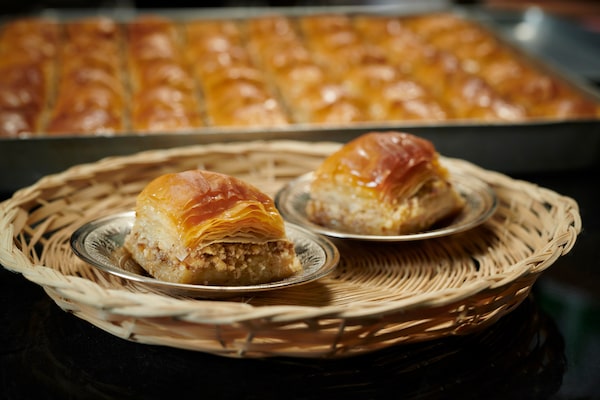
Selma Elbas's syrupy phyllo treats.JEREMY FOKKENS/The Globe and Mail
The holiday season is more tethered to culinary tradition than any other time of year. But that festive nostalgia is often nudged by Christmas movies and festive carols toward mince pies, plum puddings and other dishes with largely British roots. Early waves of immigration from Europe and Scandinavia have also played a part in determining the default desserts that punctuate December feasts. Yet migratory routes to Canada have long since shifted, and those communities have brought along a vast smorgasbord of baked goods that deserve equal consideration. Turkish baklava, Jamaican rum cake or Jewish sufganiyot might not be as familiar to some as a well-iced Yule log but they capture the spirit of togetherness in an equally sweet way.
Read the full Style Advisor: November 2020 holiday edition
Selma Elbasi rolls translucent phyllo for her syrupy treats

Elbasi rolls translucent phyllo.JEREMY FOKKENS/The Globe and Mail
Though most bakers wouldn’t dream of attempting to make phyllo from scratch, pastry chef Selma Elbasi grew up rolling thinner-than-paper sheets by hand, using a wooden rolling pin, with her mother in Turkey. “It’s a cultural thing – when you’re young, you have to learn to make phyllo,” she says. After coming to Canada with her husband Mahmut in 2005 and opening a restaurant together, she decided to hone her pastry skills even further and returned to Turkey to train with chefs there for two months.
The Elbasi family owns one of the only phyllo sheeting machines in the country. It lives at their popular corner spot, Anatolia Turkish Cuisine, in the Crossroads Farmers' Market in Calgary. But Selma still occasionally rolls the phyllo by hand to make the flakiest baklava, börek and other pastries they have on offer year-round. Though even skilled chefs roll one sheet at a time, she has mastered rolling up to 16 delicate layers at once, buffered with cornstarch or wheat starch to keep them from sticking. Her baklava is stuffed with brilliant green pistachios imported from Turkey, and doused in syrup while they’re still hot.
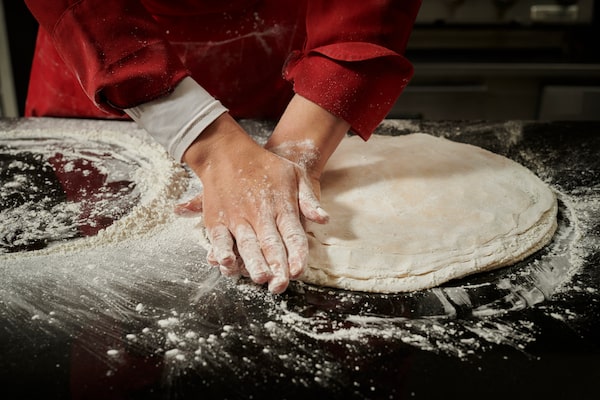

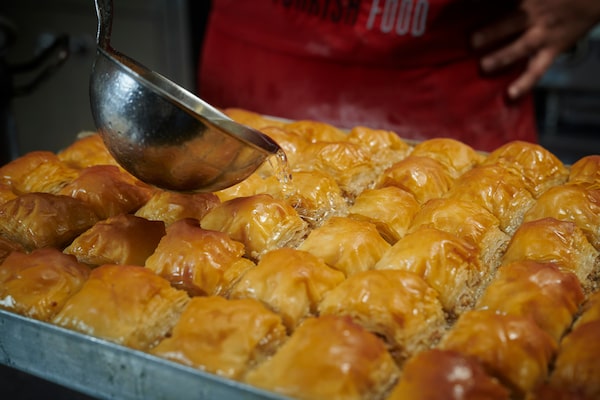
Elbasi will be producing sweets in time for those celebrating Christmas.JEREMY FOKKENS/The Globe and Mail
Though the Islamic holidays Eid al-Fitr and Eid al-Adha have passed this year, Elbasi will be producing more sweets for customers celebrating Christmas. It’s something they did back home in Kayseri. “Our city is mixed. They celebrate Ramadan and Eid with us, and we celebrate Christmas with them,” says Mahmut. “They’re your neighbours. They cook and bring food to you, and you cook for them. That’s what the holidays are about.”
Lorraine Robinson’s rum cake is months in the making
Lorraine Robinson, right, and her mother, Davina.Shalan and Paul/The Globe and Mail
Growing up in Jamaica, Lorraine Robinson was surrounded by bakers. Her mother and godmother baked for special occasions, such as weddings and birthdays, and enlisted her help to beat butter and sugar by hand with a big wooden spoon. “Mixers weren’t a big thing, so they used to call on the kids a lot,” says Robinson.
What was a big thing, particularly around Christmas, was Jamaican rum cake. She brought the techniques she learned from her godmother to her Brampton, Ont., bakery, Robinson’s Cakery. This year, she has had about 60 gallons of fruit, including raisins, currants, prunes, cherries, pineapple and citrus zest, soaking in port and rum since August in order to make over 300 cakes this holiday season.
Lorraine Robinson’s rum cake.Shalan and Paul/The Globe and Mail
At Christmastime, Robinson will grind the booze-soaked, plumped fruit, ensuring the finished cakes are dark and moist, with all the flavour but not the chunky texture some people find off-putting in a fruitcake. Her treats are heavily spiced with cinnamon, nutmeg and cloves, just a hint of ginger, vanilla, almond extract and rosewater, all bound together with a traditional pound cake batter. “It’s more fruit than flour,” she says, adding that baking takes three hours in the oven, with water to create a steamy environment, ensuring that the cakes don’t dry out. Once baked, they’re basted with more alcohol, and she sometimes makes a banana rum sauce to flambé over the top.
Robinson’s mother, Davina, still bakes alongside her at the bakery, where they also make sweet potato and coconut milk puddings and cupcakes in tropical flavours. “I don’t want to be a traditional baker, I want to stand out,” says Robinson. “Baking is a joy for me – creating things that bring other people joy.”
Jennifer E. Crawford is exploring a new cultural identity through a doughnut
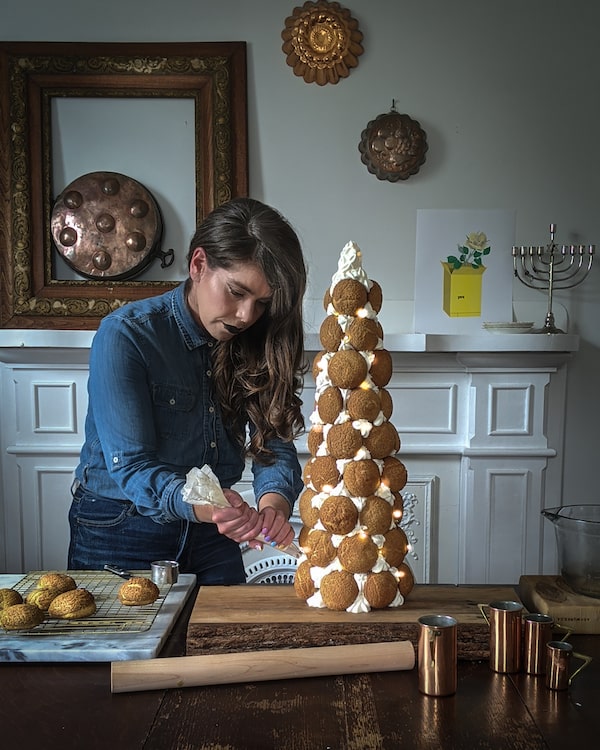
Jennifer E. Crawford's croquembouche, a tower of cream puffs filled with juniper pastry cream and glued together with spun sugar.Jennifer E. Crawford/The Globe and Mail
“I’ve been trying to carve out my own traditions as an adult,” says chef Jennifer Crawford, who writes, teaches, talks and creates unique culinary experiences at pop-up events. “There are so many lovely things about having anchors and traditions, and the fact that you can create your own any time is a really powerful idea. You can be the ancestor people a hundred years from now are referring to when they make that same thing.”
Crawford, a baker, writer and educator in Nova Scotia’s Annapolis Valley (who uses the pronoun “they”), won MasterChef Canada in 2019 and is known for the kinds of idyllic sweets so many of us seek out over the holidays. Last year, their holiday centrepiece was a croquembouche, a tower of cream puffs filled with juniper pastry cream and glued together with spun sugar. “I’ve never been that interested in putting up a tree. But a tree I can eat – I feel motivated to do that. It brings that holiday camp, to make something totally over the top, and inviting enough and huge enough that anyone can show up, and there’s enough for all.”
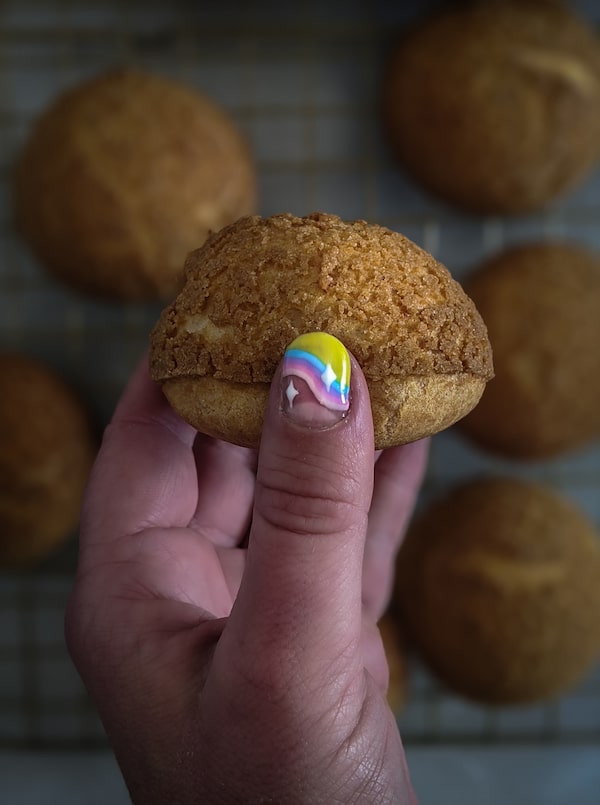
Crawford plans to make fried jelly doughnuts this year.Gillian Genser/The Globe and Mail
Five years ago, Crawford discovered that their dad, who passed away 20 years ago, had been raised Jewish for much of his childhood. Crawford came back to Nova Scotia and began to connect with people who knew him. “I get to learn and create all those traditional dishes now,” says Crawford, who plans to make sufganiyot – fried jelly doughnuts – for the first time this year. “Learning has become part of the holiday tradition, because things are always changing.”
Eric Ho reinvents dessert standards from around the world

Pastry chef Eric Ho is known for at his Little Fox Bakery in Richmond, B.C.Alana Paterson/The Globe and Mail
Pastry chef Eric Ho has been into baking since Grade 5, the year he requested an immersion blender for his birthday. “My family never baked. I didn’t have a grandmother to teach me,” he says. The family moved to Richmond, B.C., that year, 1988, where he went on to become an engineer. But his love of baking remained, and after a 13-year career in engineering, Ho made the decision to train at the Pacific Institute of Culinary Arts eight years ago.
“My interest has always been in French-style pastry,” says Ho. “I spent so much time in France. I’d go four to five times a year for work.” And so his focus turned to traditional French-style pastries such as croissants, which he’s known for at his Little Fox Bakery in Richmond. They produce over 1,700 double-baked croissants every week; traditional almond, cheese and chocolate, but also croissants stuffed with bubble tea and pork floss, and a pineapple bun croissant in which the characteristic crumb topping is scattered between pastry layers before baking.
“Growing up in Hong Kong, we’d eat a lot of food during the holidays. People do take time off and celebrate, but they aren’t tradition-based celebrations,” he says, recalling plenty of buffets and celebratory cakes, particularly chocolate and Black Forest, and frozen Viennetta, those fancy layered boxed ice cream cakes that were mass-produced in the 1980s, in chocolate, vanilla and pistachio.
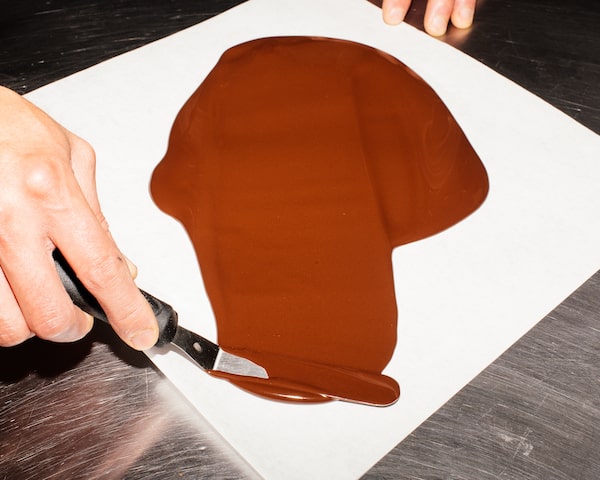

Ho's Black Forest cake.Alana Paterson/The Globe and Mail
Ho has plans to create a Black Forest cake inspired by those childhood memories this holiday season, but he also caters to his customers’ desires with freshly baked Stollen, chocolate hazelnut logs, macaron trees and confections in popular flavours such as gingerbread and peppermint. Being a professional baker is also about mastering other peoples’ culinary traditions.



